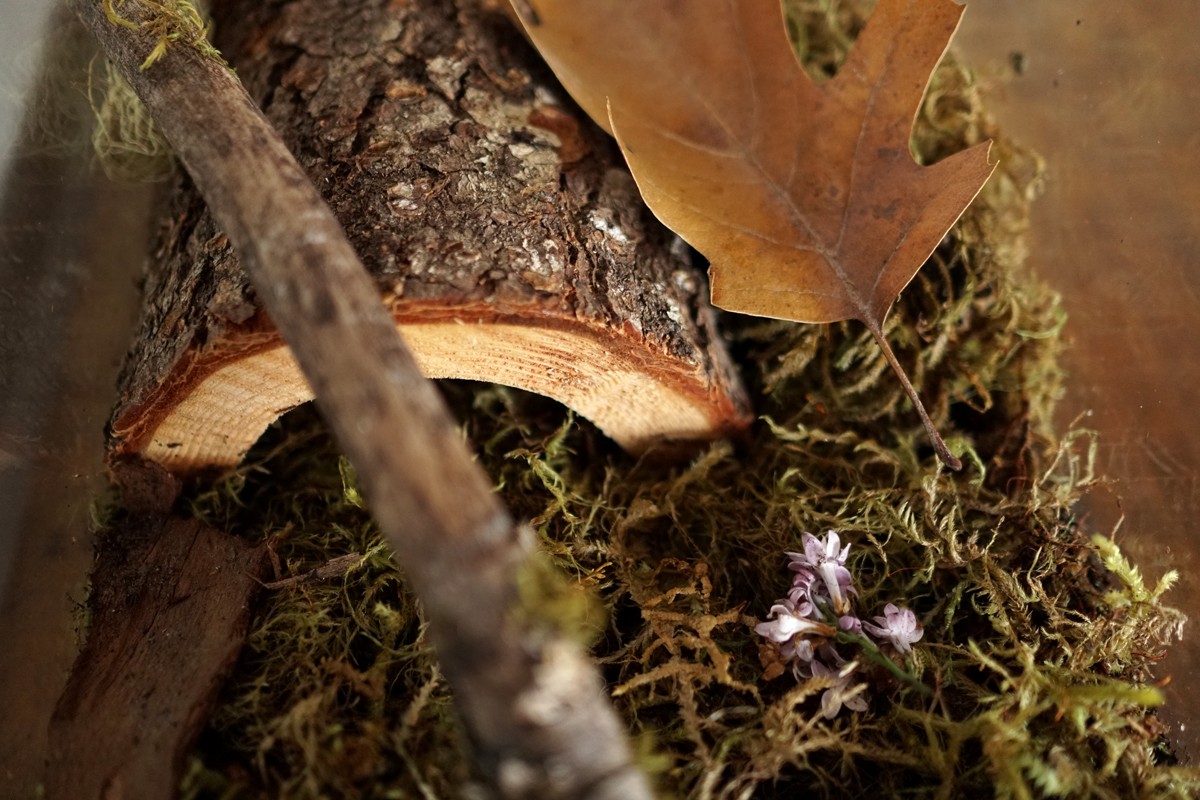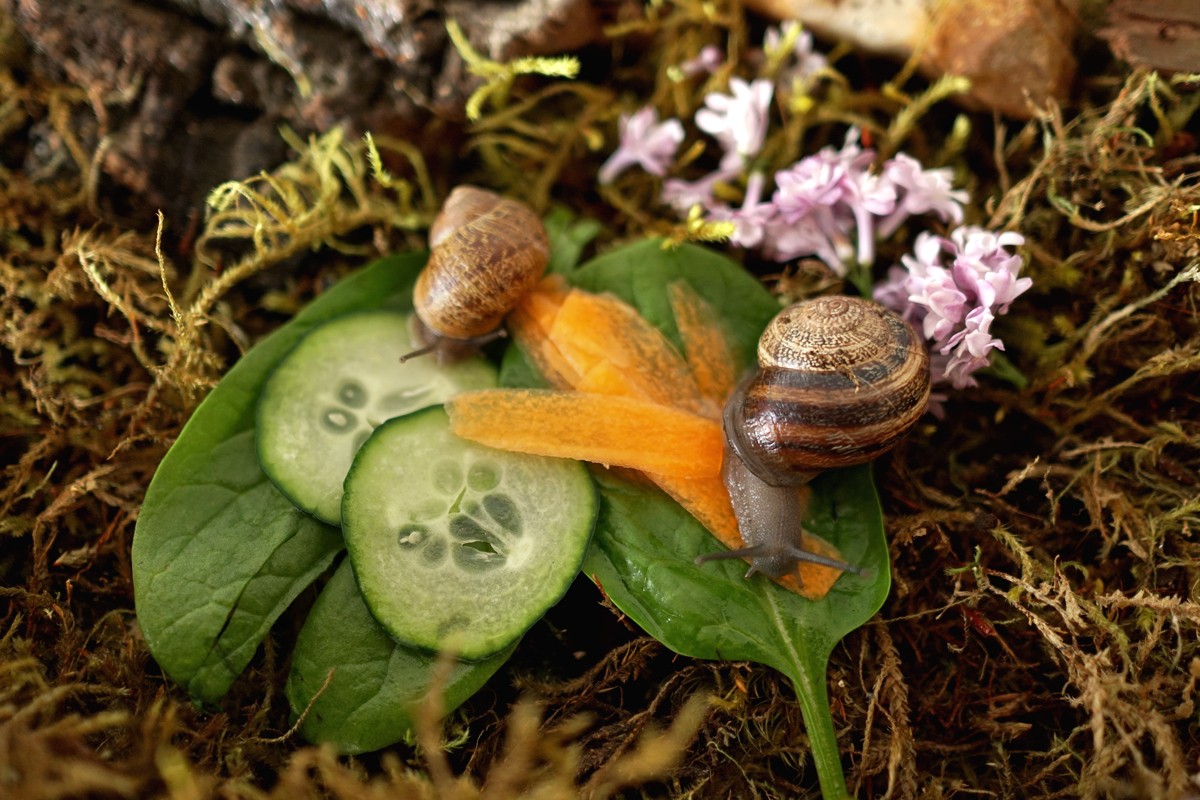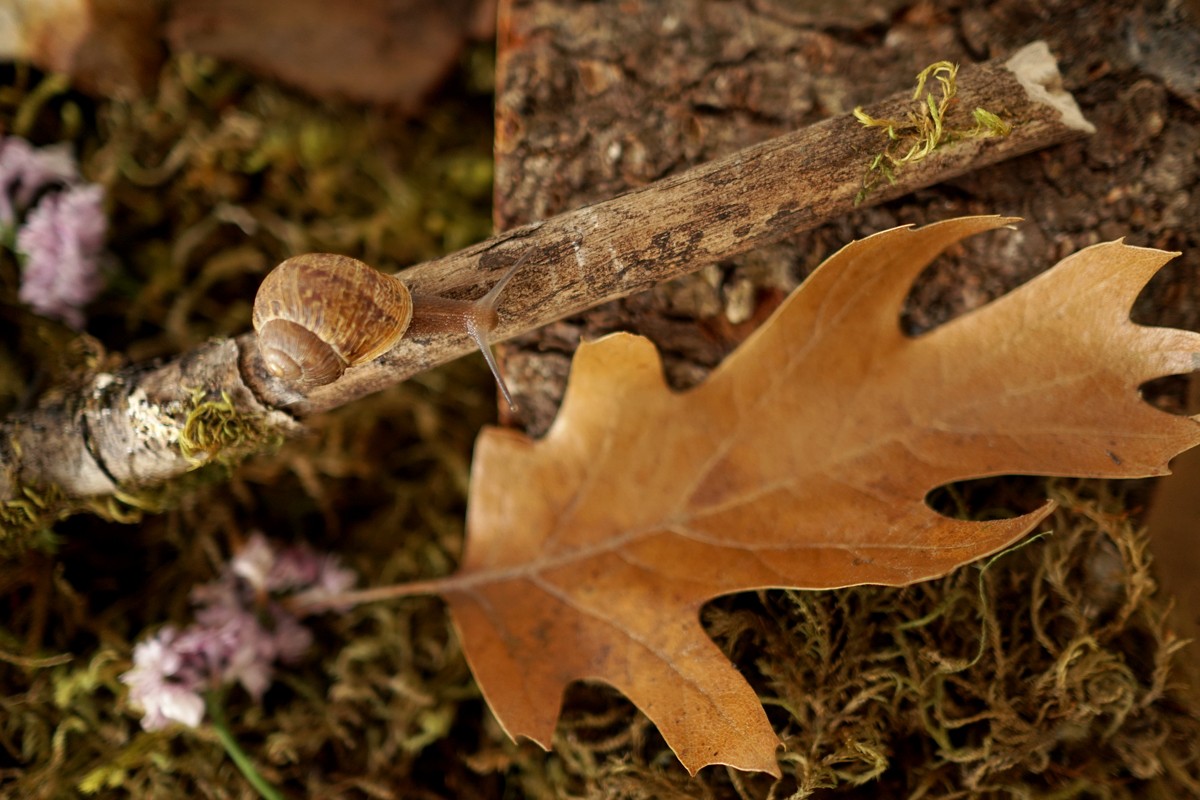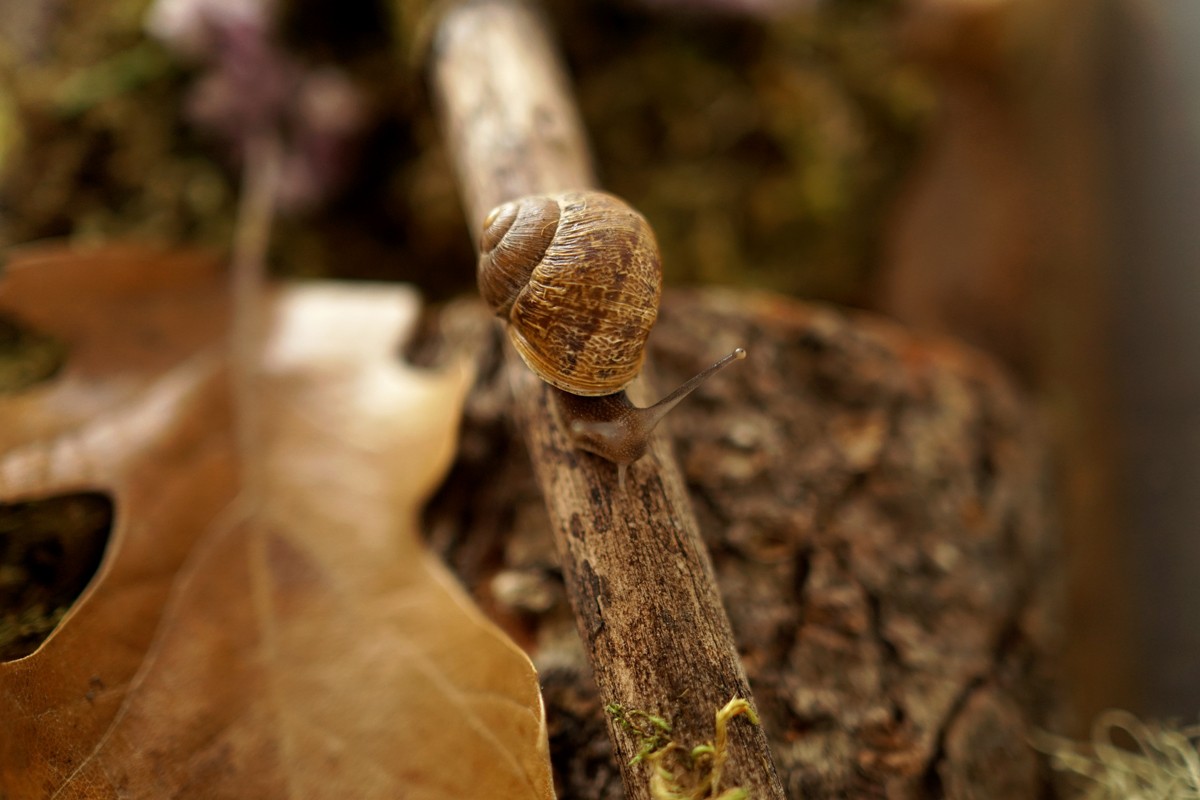Can I Keep Snails As Pets? Absolutely! Snails can be fascinating and low-maintenance pets, perfect for individuals and families alike. PETS.EDU.VN offers a wealth of information to help you create a thriving habitat and provide the best care for these shelled companions. Discover the joy of snail keeping and unlock a world of educational and rewarding experiences with these unique invertebrates.
1. Understanding the Allure of Snails as Pets
Snails, often overlooked, offer a unique and rewarding pet ownership experience. Their gentle nature, quiet demeanor, and relatively simple care requirements make them an excellent choice for beginners and seasoned pet enthusiasts alike. Before diving into the specifics of snail care, let’s explore why these creatures are gaining popularity as pets.
1.1. The Benefits of Keeping Snails
Snails offer a multitude of benefits as pets, including:
- Low Maintenance: Snails require minimal attention compared to many other pets. Their basic needs consist of a suitable habitat, a consistent food supply, and regular misting to maintain humidity.
- Quiet Companions: Unlike many other pets, snails are virtually silent, making them ideal for apartment dwellers or those sensitive to noise.
- Educational Value: Observing snails can be incredibly educational, particularly for children. They can learn about invertebrate biology, life cycles, and environmental needs.
- Unique and Fascinating: Snails exhibit interesting behaviors, such as burrowing, climbing, and interacting with their environment. Watching these behaviors can be surprisingly captivating.
- Space Saving: Snails can thrive in relatively small terrariums, making them suitable for homes with limited space.
1.2. Addressing Common Misconceptions
Many people hold misconceptions about snails, often associating them with pests or slimy creatures. However, these perceptions are largely inaccurate. Snails kept as pets are generally clean, odorless (if their environment is well-maintained), and harmless. They do not bite or carry diseases that are easily transmitted to humans. Moreover, with proper care, snails can live for several years, becoming cherished members of the family.
1.3. Different Types of Pet Snails
Before acquiring a snail, it’s essential to understand the different types available and their specific needs. Here’s a comparison table of some common pet snail species:
| Snail Species | Size | Lifespan | Temperament | Habitat Needs | Diet | Notes |
|---|---|---|---|---|---|---|
| Garden Snail (Cornu aspersum) | 1-1.5 inches | 1-2 years | Docile | Humid terrarium with soil, moss, and hiding places | Vegetables, fruits, calcium source | Common, easy to care for |
| Giant African Land Snail (Lissachatina fulica) | Up to 8 inches | 5-7 years | Docile | Large, humid terrarium with deep substrate for burrowing | Vegetables, fruits, calcium source | Requires more space and careful humidity control |
| Milk Snail (Otala lactea) | 1 inch | 2-3 years | Docile | Well-ventilated terrarium with dry substrate | Dry leaves, vegetables, calcium source | Prefers drier conditions than other snails |
| Grove Snail (Cepaea nemoralis) | 0.75 inches | 1-3 years | Docile | Humid terrarium with plenty of hiding places | Decaying leaves, vegetables, calcium source | Known for their colorful shells |





2. Is Snail Ownership Right for You?
While snails can be great pets, they aren’t for everyone. Consider these factors before committing to snail ownership:
2.1. Lifestyle Compatibility
Snails are relatively low-maintenance, but they still require daily misting, regular feeding, and occasional terrarium cleaning. If you lead a very busy lifestyle or travel frequently, you’ll need to ensure that someone can care for your snails in your absence.
2.2. Commitment Level
Snails can live for several years, depending on the species. Be prepared to commit to their care for their entire lifespan.
2.3. Allergic Considerations
While rare, some people may be allergic to snails. If you have known allergies to mollusks, exercise caution when handling snails.
2.4. Legal Considerations
In some regions, certain snail species may be regulated or prohibited due to their potential invasiveness. Research your local regulations before acquiring a snail.
If you’ve carefully considered these factors and are still enthusiastic about snail ownership, congratulations! You’re ready to embark on a rewarding journey.
3. Setting Up the Perfect Snail Habitat
Creating a suitable habitat is crucial for the health and well-being of your pet snails. Here’s a step-by-step guide to setting up a thriving terrarium:
3.1. Choosing the Right Terrarium
- Size: A minimum of 5 gallons is recommended for a couple of snails, but a 10-gallon tank or larger is ideal, especially for larger species or multiple snails. The general rule is 1 gallon per snail.
- Material: Glass or plastic terrariums are both suitable. Glass offers better visibility, while plastic is lighter and more durable.
- Ventilation: Adequate ventilation is essential to prevent the buildup of harmful gases. Choose a terrarium with a well-ventilated lid or modify it to include a screen.
- Lid: A tight-fitting lid is necessary to prevent escapes and maintain humidity. Ensure the lid is secure and, if possible, has a locking mechanism.
3.2. Substrate Selection
The substrate is the material that lines the bottom of the terrarium. It should be safe for snails, retain moisture, and allow for burrowing. Recommended substrates include:
- Sterilized Soil: Purchase sterilized soil specifically sold for pet terrariums. Avoid using soil from your garden, as it may contain parasites or harmful chemicals.
- Coconut Fiber (Coco Coir): This natural substrate is excellent at retaining moisture and is safe for snails.
- Sphagnum Moss: Add a layer of sphagnum moss on top of the substrate to help maintain humidity and provide a soft surface for snails to crawl on. Peat moss is not recommended because it is too acidic.
Important Note: Never use potting soil, sand, pebbles, or gravel as substrate, as these materials can be harmful to snails.
3.3. Decor and Enrichment
Snails enjoy climbing, hiding, and exploring their environment. Add the following items to enrich their habitat:
- Climbing Structures: Provide sticks, branches, bark, and cork bark for snails to climb on.
- Hiding Places: Offer caves, hollow logs, or upturned flowerpots where snails can retreat and feel secure.
- Live Plants: Add live plants to create a natural and aesthetically pleasing environment. Ensure that the plants are non-toxic to snails. Safe options include ferns, mosses, and certain types of leafy greens.
- Shallow Water Dish: Provide a shallow dish of filtered water for snails to drink and bathe in.
3.4. Temperature and Humidity Control
- Temperature: Snails generally thrive at room temperature (65-75°F or 18-24°C). Avoid placing the terrarium in direct sunlight or near heat sources, as this can cause overheating.
- Humidity: Maintain humidity by misting the terrarium daily with filtered water. The substrate should be moist but not soggy. Use a hygrometer to monitor humidity levels.
3.5. Lighting
Snails do not require special lighting. Indirect sunlight is sufficient. Avoid placing the terrarium in direct sunlight, as this can cause overheating and dryness.
4. Feeding Your Pet Snails
A balanced and varied diet is essential for the health and well-being of your pet snails.
4.1. Dietary Staples
Garden snails are herbivores and thrive on a varied diet of fresh fruits and vegetables. The following are a few particular items that ours enjoy: leafy greens, carrots, dandelion leaves, cucumber, apple and flowers.
4.2. Calcium Supplementation
Calcium is crucial for shell growth and maintenance. Provide a constant source of calcium by offering:
- Cuttlebone: This is an excellent source of calcium and can be placed directly in the terrarium.
- Calcium Powder: Sprinkle calcium powder on their food.
- Eggshells: Offer crushed eggshells as a calcium supplement.
4.3. Protein Sources
While snails primarily eat fruits and vegetables, they also require some protein in their diet. Offer small amounts of protein sources, such as:
- Dried Fish Food: Offer a small pinch of dried fish food once or twice a week.
- Mushroom: Once a week, adding small mushroom can help to give them extra nutrients.
4.4. Foods to Avoid
Avoid feeding snails the following foods:
- Salty Foods: Salt is toxic to snails.
- Acidic Fruits: Avoid citrus fruits and other acidic fruits.
- Processed Foods: These foods are generally unhealthy for snails.
4.5. Feeding Schedule
Feed your snails daily, removing any uneaten food after 24 hours to prevent mold growth. Always clean food before feeding it to them to remove any traces of things that could be harmful for them. Also add a shallow dish of filtered water for them to drink or play in.
5. Maintaining a Healthy Snail Environment
Regular maintenance is essential for a healthy snail habitat.
5.1. Daily Misting
Mist the terrarium daily with filtered water to maintain humidity.
5.2. Waste Removal
Remove any waste and uneaten food regularly to prevent mold growth and bacterial contamination.
5.3. Terrarium Cleaning
Do a thorough cleaning of the terrarium once or twice a month. Remove all substrate, clean the terrarium with warm, soapy water (rinse thoroughly), and replace the substrate with fresh material.
5.4. Snail Bathing
Occasionally, you can gently bathe your snails in shallow, lukewarm water to remove any dirt or debris from their shells.
6. Handling Your Pet Snails
Snails are generally safe to handle, but it’s essential to take precautions to protect both yourself and the snails.
6.1. Hand Washing
Always wash your hands thoroughly before and after handling snails to prevent the spread of bacteria.
6.2. Gentle Handling
Handle snails gently to avoid damaging their shells. Support their bodies and avoid pulling them off surfaces.
6.3. Child Supervision
Supervise children when they are handling snails to ensure they do so gently and safely. Touching any soft of critter can expose you to pathogens, so make sure that your children do not put their hands in their mouth, rub their eyes or handle food before washing their hands well. Safety first!
7. Common Snail Health Issues
While snails are generally hardy, they can be susceptible to certain health issues.
7.1. Shell Problems
Shell problems can result from malnutrition, low humidity, or physical trauma. Ensure your snails receive adequate calcium and maintain proper humidity levels. If you notice any cracks or damage to the shell, consult with a veterinarian.
7.2. Parasites
Snails can be infected with parasites, such as mites or nematodes. If you suspect a parasitic infection, consult with a veterinarian.
7.3. Bacterial Infections
Bacterial infections can occur in snails due to poor hygiene or injury. Keep the terrarium clean and monitor your snails for any signs of infection, such as lethargy or unusual discharge.
7.4. Preventing Health Problems
The best way to prevent health problems in snails is to provide them with a clean, healthy environment and a balanced diet.
8. Breeding Snails (Optional)
If you keep multiple snails, they may breed. If you do not wish to breed snails, you can freeze the eggs to prevent them from hatching.
8.1. Identifying Snail Eggs
Snail eggs are small, round, and translucent. They are usually laid in the soil.
8.2. Incubation
If you wish to hatch the eggs, keep them in a humid environment. The eggs will typically hatch in a few weeks.
8.3. Caring for Baby Snails
Baby snails require the same care as adult snails, but they are more vulnerable to dehydration and require smaller food portions.
9. The Joy of Snail Watching
One of the most rewarding aspects of snail ownership is observing their behavior.
9.1. Nocturnal Activity
Snails are primarily nocturnal, so they are most active at night. Observe them as they explore their terrarium, climb on structures, and interact with each other.
9.2. Burrowing Behavior
Snails enjoy burrowing in the substrate. Provide them with a deep substrate layer to encourage this behavior.
9.3. Social Interaction
Snails are social creatures and enjoy the company of other snails. Keep multiple snails together to observe their interactions.
10. Frequently Asked Questions (FAQs) About Snail Pets
Here are some frequently asked questions about keeping snails as pets:
- Are snails good pets for kids? Yes, snails can be great pets for kids, teaching them about responsibility and the natural world. However, adult supervision is essential.
- Do snails smell? Snails themselves do not smell, but a poorly maintained terrarium can produce an odor. Regular cleaning is essential.
- Can snails live with other pets? Snails should not be housed with other pets, as they may be harmed or carry diseases.
- How long do snails live? Snails can live for several years, depending on the species and care provided.
- What do I do if my snail’s shell is damaged? Minor shell damage can sometimes heal on its own with proper calcium intake and humidity. Severe damage requires veterinary attention.
- Are snails noisy pets? No, snails are virtually silent pets.
- Do snails need a heat lamp? No, snails generally thrive at room temperature and do not require a heat lamp.
- Can I take my snail outside? It’s generally not recommended to take pet snails outside, as they may be exposed to parasites or harmful chemicals.
- What should I do with snail eggs if I don’t want to breed them? Freeze the eggs to prevent them from hatching.
- Where can I get snails for pets? You can find pet snails at local pet stores, reptile expos, or from reputable breeders.
11. Additional Resources for Snail Enthusiasts
- Online Forums: Connect with other snail enthusiasts on online forums to share tips and ask questions.
- Books: Read books about snail care to learn more about their biology and needs.
- Veterinarians: Consult with a veterinarian experienced in invertebrate care for any health concerns.
- PETS.EDU.VN: Explore PETS.EDU.VN for additional articles, guides, and resources on snail care and other fascinating pets.
12. Finding a Reputable Snail Breeder or Supplier
When acquiring snails, ensure you source them from reputable breeders or suppliers who prioritize the health and welfare of their animals. Look for breeders who can provide information about the snail’s history, care requirements, and potential health concerns.
12.1. Questions to Ask a Breeder or Supplier
- What species of snail is this?
- What are the specific care requirements for this species?
- What is the snail’s age and health history?
- What do you feed the snails?
- Have the snails been treated for any parasites or diseases?
13. Ethical Considerations for Snail Keeping
As with any pet ownership, ethical considerations are paramount. Ensure you can provide a suitable environment and meet the needs of your snails for their entire lifespan. Avoid collecting snails from the wild, as this can harm local ecosystems.
13.1. Responsible Snail Ownership
- Provide a spacious and enriching habitat.
- Offer a varied and nutritious diet.
- Maintain a clean and healthy environment.
- Seek veterinary care when needed.
- Prevent accidental breeding if you are not prepared to care for the offspring.
14. The Importance of Enrichment for Snail Well-being
Enrichment is crucial for the mental and physical well-being of snails. Providing a stimulating environment can prevent boredom, reduce stress, and encourage natural behaviors.
14.1. Enrichment Ideas for Snails
- Rotate terrarium decorations regularly to provide novelty.
- Offer different types of food to stimulate their senses.
- Provide opportunities for climbing and exploration.
- Introduce new scents to the terrarium, such as fresh herbs or flowers (ensure they are snail-safe).
15. Advanced Snail Care Techniques
For experienced snail keepers, there are several advanced techniques that can further enhance the well-being of your shelled companions.
15.1. Bioactive Terrariums
A bioactive terrarium is a self-sustaining ecosystem that includes beneficial microorganisms, invertebrates, and plants. These terrariums require less maintenance and provide a more natural environment for snails.
15.2. Snail Training
While snails may not be as trainable as dogs or cats, they can be trained to associate certain cues with food. This can be a fun and engaging way to interact with your snails.
15.3. Snail Photography
Capturing stunning photos of your snails can be a rewarding hobby. Experiment with different lighting, angles, and compositions to showcase their unique beauty.
16. Snail Conservation and Awareness
Raising awareness about snail conservation is essential, as many snail species are threatened by habitat loss, pollution, and climate change.
16.1. Supporting Snail Conservation Efforts
- Donate to organizations that protect snail habitats.
- Educate others about the importance of snail conservation.
- Avoid using pesticides or herbicides that can harm snails.
- Create snail-friendly habitats in your garden.
17. The Future of Snail Keeping
Snail keeping is a growing hobby, and there are many exciting developments on the horizon.
17.1. New Snail Species
New snail species are being discovered regularly, offering snail keepers an ever-expanding range of options.
17.2. Improved Care Techniques
Researchers are constantly learning more about snail biology and behavior, leading to improved care techniques.
17.3. Increased Availability of Snail Products
The availability of snail-specific products, such as terrariums, substrates, and foods, is increasing, making snail keeping more accessible than ever before.
18. Snail Myths Debunked
Let’s address some common myths about snails:
- Myth: Snails are slimy. Snails produce mucus to help them move and protect their bodies, but they are not inherently slimy.
- Myth: Snails are pests. While some snails can be pests in gardens, pet snails are generally harmless.
- Myth: Snails are boring. Snails exhibit fascinating behaviors and can be surprisingly engaging pets.
- Myth: Snails are difficult to care for. Snails are relatively low-maintenance pets, especially compared to other animals.
19. Community and Support for Snail Keepers
Connecting with other snail keepers can provide valuable support, advice, and inspiration.
19.1. Online Snail Communities
- Join online forums and social media groups dedicated to snail keeping.
- Share your experiences, ask questions, and learn from others.
- Participate in online discussions and contests.
19.2. Local Snail Clubs
- Look for local snail clubs or societies in your area.
- Attend meetings and events to connect with other snail enthusiasts.
- Share your knowledge and passion for snails with others.
20. Conclusion: Embrace the Wonderful World of Snail Keeping
Keeping snails as pets can be an incredibly rewarding experience. With proper care and attention, these gentle creatures can bring joy, education, and fascination to your life. So, can you keep snails as pets? The answer is a resounding yes! If you’re looking for a low-maintenance, quiet, and unique pet, snails may be the perfect choice for you. Explore the wealth of knowledge available at PETS.EDU.VN to embark on your snail-keeping adventure with confidence.
For more in-depth information and specialized services, visit PETS.EDU.VN or contact us at 789 Paw Lane, Petville, CA 91234, United States. You can also reach us via Whatsapp at +1 555-987-6543. Let pets.edu.vn be your trusted guide in the fascinating world of pet snails and other amazing animals.